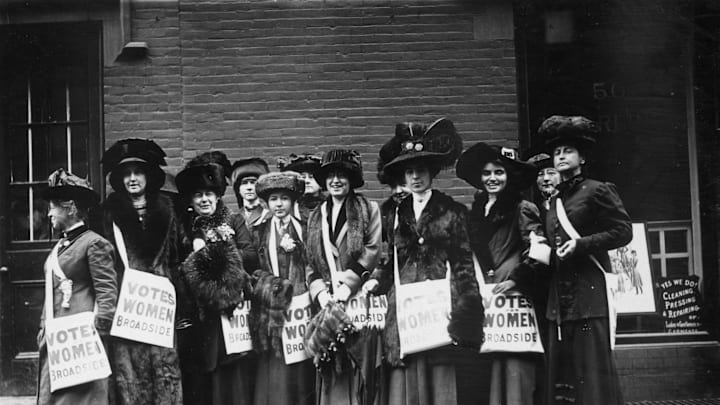The Role of Women in the Suffrage Movement

The roots of the suffrage movement can be traced to the broader context of the women's rights movement, which emerged in the mid-19th century. The Seneca Falls Convention in 1848, organized by activists such as Elizabeth Cady Stanton and Lucretia Mott, is often considered the starting point of the organized suffrage movement in the United States. The convention produced the Declaration of Sentiments, a document that outlined the injustices faced by women and called for equal rights, including the right to vote.
Women played a central role in the suffrage movement through various forms of activism. They organized rallies, parades, and public demonstrations to raise awareness and garner support for their cause. One of the most notable events was the 1913 Women's Suffrage Parade in Washington, D.C., which saw thousands of women march in support of voting rights. The parade was met with hostility and violence, highlighting the intense opposition the suffragists faced.
The suffrage movement was also marked by strategic lobbying and advocacy efforts. Women formed organizations such as the National American Woman Suffrage Association (NAWSA) and the more militant National Woman's Party (NWP). Leaders like Susan B. Anthony, Carrie Chapman Catt, and Alice Paul played pivotal roles in these organizations, employing different tactics to achieve their goals. NAWSA focused on a state-by-state approach to securing voting rights, while the NWP advocated for a federal amendment to the U.S. Constitution.
The suffragists used various forms of media and communication to advance their cause. They published newspapers, pamphlets, and books that articulated their arguments and educated the public about the importance of women's suffrage. The use of imagery, such as the iconic "Votes for Women" banners and posters, helped to create a strong visual identity for the movement. Suffragists also leveraged the power of personal narratives, sharing stories of women's contributions to society and their exclusion from the political process.
The suffrage movement faced significant opposition from various quarters. Anti-suffrage groups, including some women, argued that granting women the right to vote would disrupt traditional gender roles and undermine social stability. Critics also contended that women were not suited for the responsibilities of voting and governance. Despite these challenges, the suffragists remained steadfast in their pursuit of equality.
The culmination of the suffrage movement in the United States came with the passage of the 19th Amendment to the Constitution in 1920. This historic achievement granted women the right to vote, marking a significant victory for the movement and a transformative moment in American history. The passage of the 19th Amendment was the result of decades of relentless activism, advocacy, and perseverance by women who believed in the principles of democracy and equality.
The impact of the suffrage movement extended beyond the right to vote. It catalyzed broader social and political changes, paving the way for subsequent movements for gender equality and women's rights. The activism and organizational skills developed during the suffrage movement were instrumental in advancing causes such as reproductive rights, equal pay, and women's participation in the workforce and politics.
Internationally, the success of the suffrage movement in the United States and other countries inspired similar efforts around the world. Women in many nations continued to fight for and achieve voting rights, contributing to the global advancement of gender equality and democratic governance.
In conclusion, the role of women in the suffrage movement was crucial to its success and to the broader struggle for gender equality. Through their activism, advocacy, and unwavering determination, women secured the right to vote and transformed the social and political landscape. The legacy of the suffrage movement continues to inspire and empower individuals and movements striving for justice and equality worldwide.